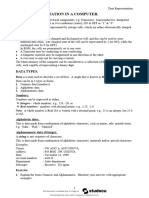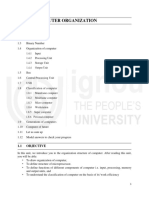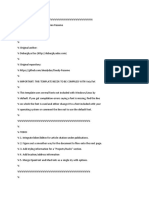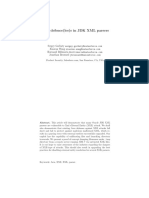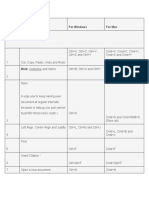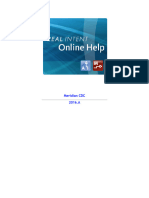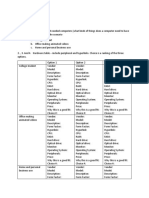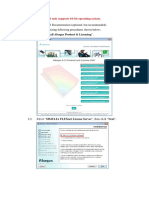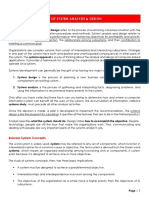Department of Electrical Engineering First Year / 2019-2020 By: Dr.
Salwa Adel Al-agha
Lecture 4
1. Data:
Data is a raw and unorganized fact that required to be processed to make
it meaningful. Data can be simple at the same time unorganized unless it is
organized. Generally, data comprises facts, observations, perceptions
numbers, characters, symbols, image, etc.
Data is always interpreted, by a human or machine, to derive meaning. So,
data is meaningless. Data contains numbers, statements, and characters in a
raw form.
2. Information:
Information is a set of data which is processed in a meaningful way
according to the given requirement. Information is processed, structured, or
presented in a given context to make it meaningful and useful.
Data is processed, which includes context, relevance, and purpose. It also
involves manipulation of raw data.
Information assigns meaning and improves the reliability of the data. It
helps to ensure undesirability and reduces uncertainty. So, when the data is
transformed into information, it never has any useless details.
3. Data Representation in Computers:
Computers are classified according to functionality, physical size and
purpose.
Functionality, Computers could be analog, digital or hybrid. Digital
computers process data that is in discrete form whereas analog computers
process data that is continuous in nature. Hybrid computers on the other hand
can process data that is both discrete and continuous.
In digital computers, the user input is first converted and transmitted as
electrical pulses that can be represented by two unique states ON and OFF,
ON state may be represented by a “1” and the OFF state by a “0”.The
1
�Department of Electrical Engineering First Year / 2019-2020 By: Dr. Salwa Adel Al-agha
Lecture 4
sequence of ON’S and OFF’S forms the electrical signals that the computer
can understand.
3.1 Types of Data Representation:
The terms bits, bytes, nibble and word are used widely in reference to
computer memory and data size:
Bits: can be defined as either a binary, which can be 0, or 1.It is the basic
unit of data or information in digital computers.
Byte: a group of bits (8 bits) used to represent a character. A byte is
considered as the basic unit of measuring memory size in computer.
Word: two or more bits make a word. The term word length is used as the
measure of the number of bits in each word. For example, a word can
have a length of 16 bits, 32 bits, 64 bits etc.
Computers not only process numbers, letters and special symbols but also
complex types of data such as sound and pictures. However, these
complex types of data take a lot of memory and processor time when
coded in binary form.
4. Number Systems:
A number system is a set of symbols used to represent values derived
from a common base or radix.
As far as computers are concerned, number systems can be classified into
major categories:
4.1 Decimal Number System:
The term decimal is derived from a Latin prefix deci, which means ten.
Decimal number system has ten digits ranging from 0 - 9. Because this
system has ten digits; it is also called a base ten number system or denary
number system.
A decimal number should always be written with a subscript 10 e.g. X10.
2
�Department of Electrical Engineering First Year / 2019-2020 By: Dr. Salwa Adel Al-agha
Lecture 4
But since this is the most widely used number system in the world, the
subscript is usually understood and ignored in written work. However, when
many number systems are considered together, the subscript must always be
put so as to differentiate the number systems.
The magnitude of a number can be considered using these parameters.
Absolute Value:
It is the magnitude of a digit in a number, for example the digit 5 in 7458
has an absolute value of 5 according to its value in the number line.
Place Value or Position Value:
A digit in a number refers to the position of the digit in that number i.e.
whether; tens, hundreds, thousands etc.
Total Value of Number:
It is the sum of the place value of each digit making the number.
Base Value:
Known as the radix, depends on the type of the number systems that is
being used .The value of any number depends on the radix, for example
the number 10010 is not equivalent to 1002.
4.2 Binary Number System:
It uses two digits namely, 1 and 0 to represent numbers. unlike in decimal
numbers where the place value goes up in factors of ten, in binary system, the
place values increase by the factor of 2, binary numbers are written as X2,
consider a binary number such as 10112. The right most digit has a place
value of while the left most has a place value of .
4.3 Octal Number System:
Consists of eight digits ranging from 0-7. The place value of octal
numbers goes up in factors of eight from right to left.
3
�Department of Electrical Engineering First Year / 2019-2020 By: Dr. Salwa Adel Al-agha
Lecture 4
4.4 Hexadecimal Number System:
This is a base 16 number system that consists of sixteen digits ranging
from 0-9 and letters A-F where A is equivalent to 10,B to 11 up to F which is
equivalent to 15 in base ten system. The place value of hexadecimal numbers
goes up in factors of sixteen.
A hexadecimal number can be denoted using 16 as a subscript or capital
letter H to the right of the number, for example, 94B can be written as 94B16
or 94BH.
5. 1’s Complement and 2’s Complement:
1’s complement of a binary number is another binary number obtained by
replacing all bits in it, i.e., transforming the 0 bit to 1 and the 1 bit to 0.
Example:
2’s complement of a binary number is added 1 to the 1’s complement of
the binary number.
Example:
4
�Department of Electrical Engineering First Year / 2019-2020 By: Dr. Salwa Adel Al-agha
Lecture 4
6. Floating Point Numbers:
A real number (a number that can contain a fractional part). Floating point
numbers are numbers that contain floating decimal points. Numbers that do
not have decimal places are called integers. For example, the numbers 5.5,
0.001, and -2,345.6789 are floating point numbers, 3E-5 is a computer
shorthand for scientific notation, it means 3*10-5 (or 10 to the negative 5th
power multiplied by 3). Computers recognize real numbers that contain
fractions as floating point numbers.
7. ASCII Code:
ASCII (American Standard Code for Information Interchange) is the most
common format for text files in computers and on the Internet. ASCII was
developed by the American National Standards Institute (ANSI). In an ASCII
file, each alphabetic, numeric, or special character is represented with a 7-bit
binary number (a string of seven 0s or 1s). 128 possible characters are
defined. Bit-patterns ranging from 0000000 to 1111111. The first pattern
represents (NUL null character), the last pattern represents (DEL delete
character).
5
�Department of Electrical Engineering First Year / 2019-2020 By: Dr. Salwa Adel Al-agha
Lecture 4









